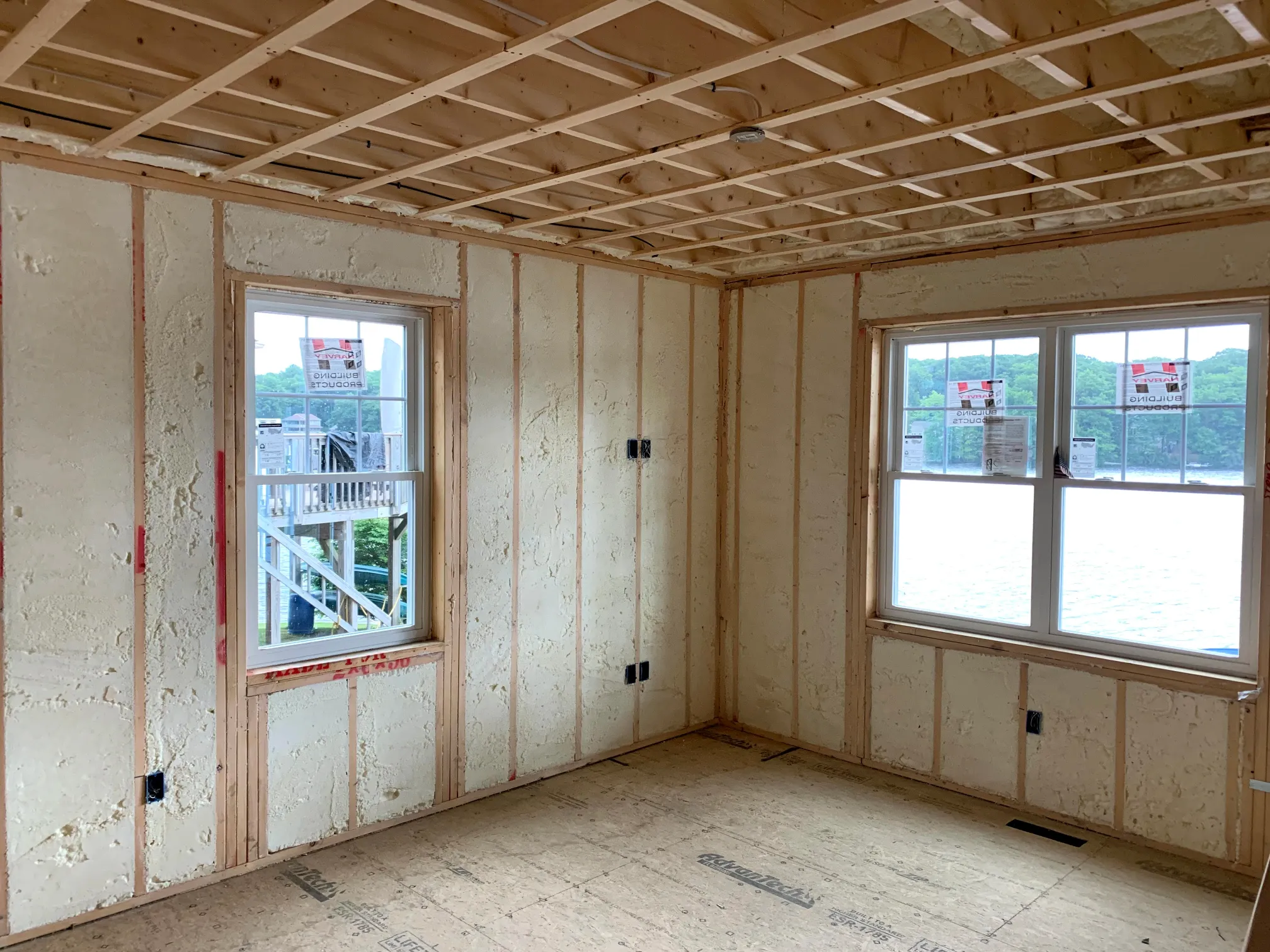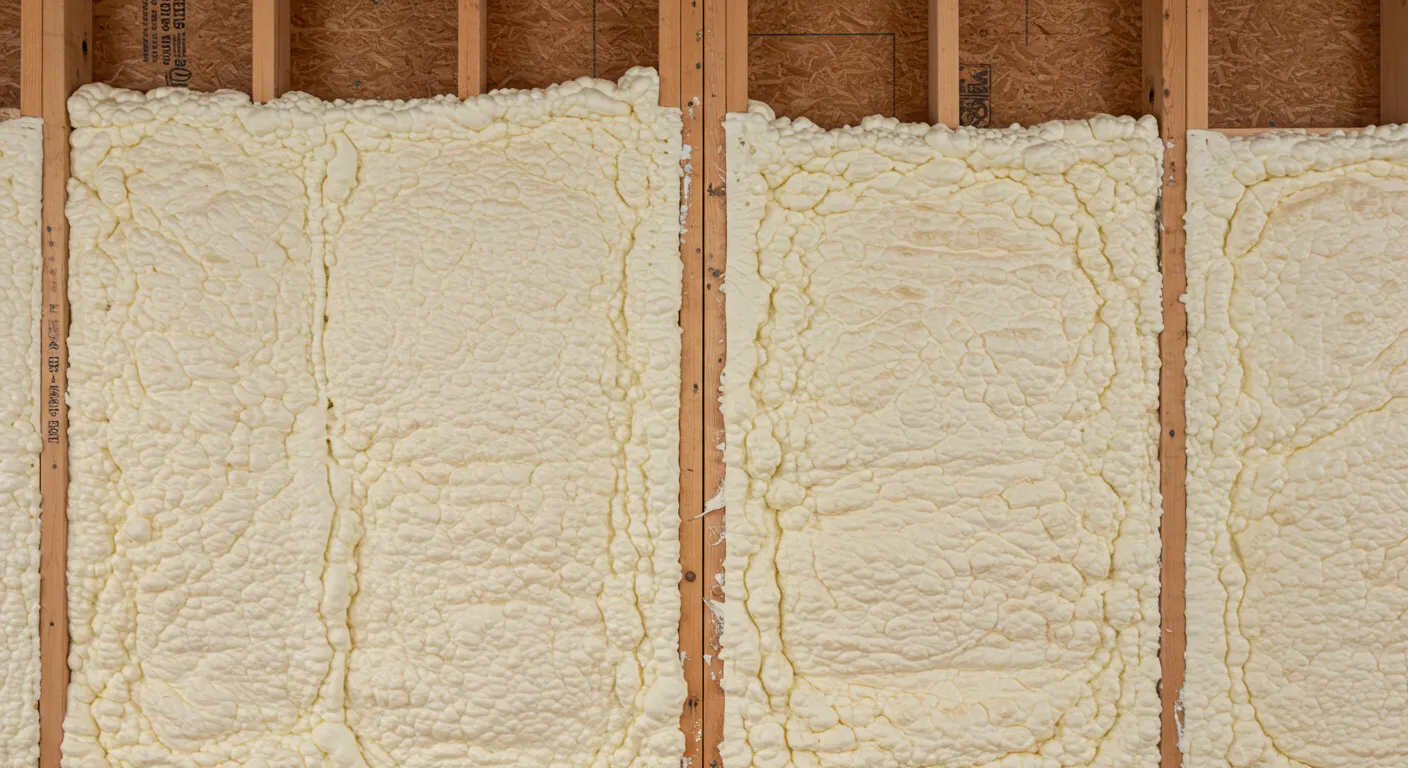
Spray foam insulation offers strong thermal resistance and air sealing when correctly installed. Mistakes during installation can compromise its performance, cause safety hazards, and result in costly repairs. The most common issues stem from surface prep failures, improper product handling, and incorrect application thickness.
This article outlines common errors to avoid, based on field experience with both open-cell and closed-cell spray foam across residential and commercial projects. The information here reflects installation realities, climate-specific challenges, and product behavior.
Lamothe Insulation & Contracting brings years of practical experience working in the New England climate, where freeze-thaw cycles and high humidity levels require precision and judgment during application.
Spray foam does not adhere properly to damp, dusty, or oily surfaces. Inadequate surface prep leads to delamination, air gaps, and insulation failure.
Bonus Tip: Use a moisture meter to confirm surface dryness before application, especially in basements or crawl spaces.
Foam insulation is not a substitute for proper air sealing. Gaps, cracks, and penetrations should be sealed beforehand to ensure full building envelope performance.
Both ambient and surface temperatures must fall within manufacturer guidelines. Cold temperatures can reduce foam expansion, while heat accelerates cure time, increasing the risk of shrinkage and poor adhesion.
Applying foam too thick in a single pass can cause improper curing, internal cracking, or combustion risks.
Bonus Tip: For closed-cell foam, limit each pass to 2 inches and allow full curing between layers.
Inconsistent foam layers create cold spots and energy inefficiencies. Maintaining a steady, consistent spray pattern prevents voids and excess trimming.
| Product Type | Best For | R-Value per Inch | Water Resistance | Common Issues if Misused |
|---|---|---|---|---|
| Open-Cell Foam | Interior walls and sound control | ~3.5 | Low | Water absorption, air leaks |
| Closed-Cell Foam | Exterior walls, basements, roofs | ~6.5 | High | Shrinkage, off-gassing |
| Blown-In Insulation | Attics, enclosed cavities | ~3.2-3.8 | Medium | Settling, uneven coverage |
| Mineral Wool | Fire-rated assemblies, basements | ~4.0 | High | Requires secure fitting |
| Parameter | Recommended Value/Range | Notes |
|---|---|---|
| Substrate Moisture Level | <19% | Use moisture meter before spraying |
| Ambient Application Temperature | 60°F – 80°F | Refer to product-specific guidelines |
| Maximum Pass Thickness (Closed) | 2 inches | Let cure before second application |
| Ventilation Requirement | Minimum 24 ACH during and post-installation | Protects installers and occupants |
| Curing Time | 8-24 hours depending on conditions | Full occupancy only after safe re-entry window |

Lamothe Insulation & Contracting provides key services related to spray foam applications:
Can spray foam be applied over old insulation? Only after removal of damaged or compressed material. Existing insulation can block adhesion or trap moisture.
Do I need to vacate the home during installation? Yes. Re-entry should follow manufacturer guidelines and ensure safe air quality levels.
What if I see shrinking or gaps after installation? This indicates a curing issue or improper pass thickness. Sections may need to be cut out and reapplied.
Is spray foam worth the higher cost compared to fiberglass? It depends on energy savings goals, climate zone, and space limitations. Closed-cell typically offers better ROI long-term.
Phone: (508) 847-0119 Email: [email protected]
If properly installed, both open- and closed-cell spray foam can last 30–50 years without degradation.
Foam itself is not a food source for mold, but improper installation near moisture sources can lead to mold on surrounding materials.
Yes. Once fully cured, it is inert and does not release harmful chemicals under normal conditions.
Yes, though attention must be given to flexibility and structural shifting. Closed-cell is often preferred.
Minimal. Periodic inspection for cracks, gaps, or water intrusion is recommended.